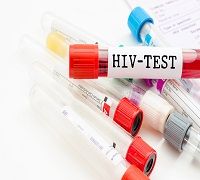Resistance to Common HIV Treatment Persists Worldwide
The human immunodeficiency virus (HIV) is becoming more resistant to a drug used both to prevent and treat infection.

The human immunodeficiency virus (HIV) is becoming more resistant to a drug used both to prevent and treat infection.
HIV can be controlled with antiretroviral therapy (ART), however, not every patient responds to it. Tenofovir, marketed under the name Viread, is becoming less potent against HIV. Researchers from the University College London, Stanford University, and London School of Hygiene & Tropical Medicine set out to determine the global prominence of resistance.
“Tenofovir is a critical part of our armamentarium against HIV, so it is extremely concerning to see such a high level of resistance to this drug,” lead author Ravi Gupta, MPH, from the UCL Division of Infection & Immunity, said in a news release. “It is very potent drug with few side-effects, and there aren’t any good alternatives that can be deployed using a public health approach.”
- MD Magazine is on Facebook, Twitter, Instagram, and LinkedIn!
In the study published in The Lancet Infectious Diseases, the team examined 1,926 patients with uncontrolled HIV, despite ART, from 1998 to 2015. The cohort included individuals from 36 countries in North America, Latin America, Europe, sub-Saharan Africa, and Asia.
CD4 cell count levels before ART therapy were the strongest indicator of tenofovir resistance. In addition, patients with compromised immune systems were 50% more likely to develop the resistance. Lamivudine usage increased the risk of resistance when compared to emtricitabine.
Out of the 1,926 patients, 700 of them had tenofovir resistance. Furthermore, 578 patients (83%) also had cytosine analogue resistance, 543 patients (78%) had major NNRTI resistance, and 457 patients (65%) had both. The average plasma viral load at virological failure was comparable whether patients had tenofovir resistance or not.
Drug resistance typically emerges when a patient doesn’t take their medication regularly enough. The highest tenofovir resistance was found in sub-Saharan Africa (57% of the 654 patients).
“If resistant strains of HIV were significantly less effective at spreading in people, we would expect to see lower levels of the virus in patients with the resistant strain,” Gupta continued. “However, we found that virus levels were no lower in individuals with the resistant strain and were high enough to be fully infectious.”
The researchers are now conducting more studies to further understand tenofovir resistant viruses.
Also on MD Magazine >>> There’s a Reason Why It’s Harder to Diagnose Tuberculosis in HIV-Positive Pregnant Women